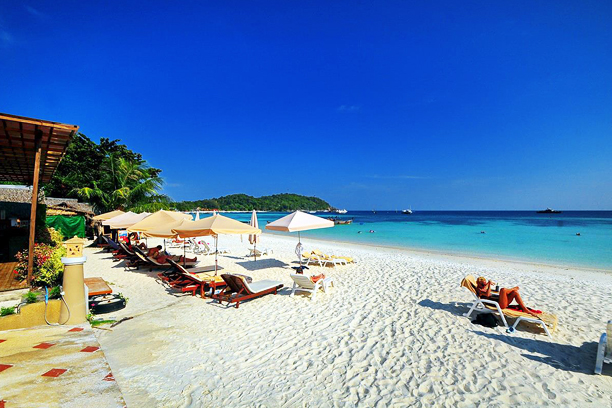Russia is at once breathtaking and baffling. Winston Churchill’s much-quoted line that the world’s largest nation represented “a riddle wrapped in a mystery inside an enigma” is as true today as it was back then.
Monumental in every respect, it’s a land where burnished imperial splendour coexists with icy Siberian tundra, where timeworn Soviet-era monuments backdrop uber-hip urban cultures and where everything from the ruling party downwards functions in its own, impenetrably Russian, way.
Moscow, home to fairytale pepper-pot churches, Red Square, Lenin’s tomb and some serious nightlife is an obvious pull. So too is St Petersburg; its Heritage Museum is an embarrassment of riches that will have you wandering open-mouthed from one masterpiece to another.
Away from the big cities is the real Russia. Relax in the spa town of Pyatigorsk in the Caucasus Mountains, go rafting or Skiing in Siberia or play some real-life ‘Risk’ in Kamchatka: it’s famous for extreme sports.
Russia will never stop to amaze you with its diverse territory and culture. On every new visit to Russia, you will be introduced to a new and unseen side of this multicultural nation. With locals having interesting stories to tell, incredible beautiful landscapes and mountains of subtropics in the south to witness, thousands of year old history to uncover and unique Russian cuisines to try, Russian destinations have always been on the wish-list of all the travellers around the world.
Quick Facts
Capital: Moscow
Language: Russian
Currency: ₽ Rouble which is made up of 100 kopeks. Coins come in 1 kopeks, 5 kopeks, 10 kopeks, 50 kopeks, ₽1, ₽2, ₽5 and ₽10 denominations and notes in ₽5, ₽10, ₽50, ₽100, ₽500, ₽1000 and ₽5000 denominations.
Electricity: 230 volts AC, 50Hz. Plugs with two round pins are standard. Outlets for 110 volts for small appliances can be found in most hotels.
Places to visit in Russia
1. Moscow
Since most international flights arrive or at least stop in Moscow, it's worth planning your trip so you at least have a few hours to explore the city. Russia's capital is a magnificent mix of greenery, stunning architecture, and lots of historical reminders of times gone by.
Visitors to Moscow usually start exploring in the canter, where the Kremlin, Red Square, and the colourful St. Basil's Cathedral are located. The shopping mall GUM, with its glass and steel roof, is also a popular destination—even by tourists who can't afford the luxury brands sold here—and a great place to try authentic Russian food.
Even if museums are not your thing, Moscow has some amazing options, including The State Tretyakov Gallery (which houses only Russian art); the Pushkin Museum (for more international collections); and the Kremlin Armory Museum for a look into some unique items, such as the ivory throne of Ivan the Terrible and gold-covered imperial carriages. The Bolshoi Theatre, one of the largest ballet and opera theatres in the world, is also worth a visit if you can get tickets.
Some of the best things in Moscow require some walking to be properly explored, such as the pedestrian-only shopping street Stary Arbat and the boardwalk along the River Moskva.
Moscow's Metro stations are a work of art in themselves, decorated with porcelain relief, crystal chandeliers, and unique mosaic artworks that make these places basically look like subterranean palaces.
2. St. Petersburg
Although smaller than Moscow, St. Petersburg actually has so much to offer, it's often impossible to see it all in one day. Compared to Moscow, St. Petersburg feels more European—fine art and exquisite design details mixing in with history around every corner. You can explore it on foot to admire the architecture up close and personal, or hop on a cruise to explore part of the 300 kilometers of canals that cut through the imperial city.
For a stunning overdose of white and gold colors, visit Moika Palace (most famous for being the place where Rasputin was killed) and the Neoclassical, 19th-century St. Isaac's Cathedral, which is actually a Russian Orthodox museum.
The Hermitage Museum, perhaps St. Petersburg's most famous tourist attraction and the second largest art and culture museum in the world, has a collection of over three million items that cover everything from prehistoric art (including articles from the nomadic tribes in Altai) to Catherine the Great's art collection.
About 25 kilometers outside of St. Petersburg, and more than worth the day trip, is Peterhof Palace. Built in the early 1700s as a summer residence for Peter the Great, it greatly resembles the Palace of Versailles in France.
3. Sochi
The breadbasket of Russia, the Krasnodar Krai is almost the size of Ireland. It's a region where the banks of the Kuban River gave a name.
4. Lake Baikal
Visit Lake Baikal, the world's largest freshwater lake where in high summer (June to August) it's sapphire-blue and almost balmy. In winter (October to April), it’s strewn with lumps of blueish ice and swept by a watery sun and chilling winds. But, for us, this is really what Lake Baikal is about — a piece of raw Siberia, a Russia that’s far removed from the metropolises of Moscow and St Petersburg that most visitors gravitate toward. Completely ringed by mountain ranges, its shores are dense with Trans-Baikal conifer, taiga (boreal) and pine forest, save for a few small towns. Beyond all this lies utter wilderness.
Shopping in Russia
Russia has come along way since the days of long queues and Soviet-style counter service, and the country is now something of a shopping heaven. Whether your tastes are expensive or more inclined to finding a bargain, everyone is catered for in equal measure - it that has vigorously embraced the market economy, and thus it’s possible to get most things most of the time. A wide range of goods can be bought at outdoor markets, shopping centres, local shops and hypermarkets. Watches, cameras, wines and spirits, ceramics and glass, jewellery, toys and a good selection of porcelain may be bought in Moscow and St Petersburg, as can caviar and vodka at very reasonable prices.
Some products such as perfume and make-up should be avoided as they tend to be overpriced and of poor quality. Shops take payment in roubles and, usually, by credit card, but it should be noted that it’s not always very easy to find English speaking assistance and it is advisable to shop around, as prices vary significantly.
Russia food & drink
Soups, salads, nibbles, nutty breads, calorific main courses and sugary desserts are all on offer in Russia – slimming it’s not. Look for the colourful and warming borsch (beetroot soup), exquisite caviar, zharkoye (hotpot) and pelmeni (Russian-style filled dumplings). Vegetarians should note that borsch is often made with beef stock.
Drinking is a national pastime in Russia. Look for different types of vodka like starka (apple and pear leaves) or pertsovka (pepper).
Weather
Again, Russia size makes its climate dependent on where you are in the country and at what time of year. Temperatures at various times throughout the year and range from a chilly -30°c in the depths of winter to a boiling 40°c at the height of summer.
Getting There
Russia is well-connected by air with flights arriving in cities like Moscow and St Petersburg and other cities from all across Europe and the UK, Asia and parts of the US and Middle East. A flight from London to Moscow will take around three hours 45 minutes and a flight from New York to Moscow about nine hours.
Best Time to Visit
Russia is a year-round destination and you should plan your visit based on the types of activities you wish to enjoy.
The most popular time of year to visit Russia’s major cities of Moscow and St Petersburg is in the summer months of June, July and August. This also means crowds but the weather is great, with lots of sunshine.
Should season (April, May, September and October) may be a better choice if you want to avoid the crowds but still make the most of the warm and sunny weather.
To enjoy the Baltic Sea beaches, you will need to brave the crowds and visit from June to August to get the best water temperatures.
If you are wanting participate in winter sports such as skiing, then you will want to visit from November to March when it is cold and there are frequent snow falls in the mountains.



